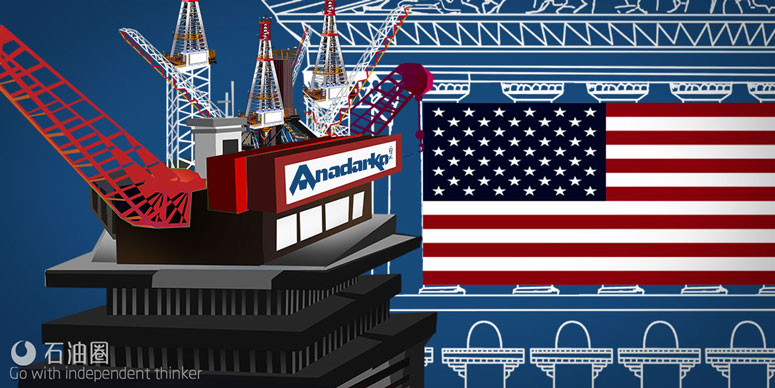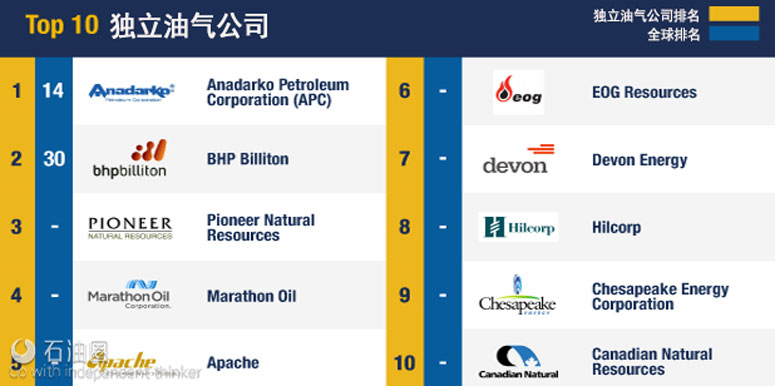Rigzone’s inaugural Ideal Employer Survey highlights what our readers see as the top independent oil and gas companies, with U.S. independent Anadarko taking the top slot. The survey of 8,466 participants, mainly drawn from Rigzone’s database of oil and gas professionals, sought to gather insight on the qualities that workers want from an employer. But what makes for a successful independent oil and gas company that is able to attract top energy professionals? Industry analysts shared their views with Rigzone.
Speed, Agility Key to Oil, Gas Independents Strategy, Success
In today’s environment, two components are needed for a successful independent oil and gas company – good people and good assets – Kris Nicol, principle analyst with Wood Mackenzie’s corporate service practice said.
“You have to be in the right parts of the right plays, particularly if you’re focused on the onshore Lower 48 [U.S. states],” Nicol commented. Independent oil and gas companies also have to have the right strategy in place to facilitate growth, which often or not includes a strong balance sheet. Whether a company has maintained its hedge through the downturn is another factor of continued success. Companies that have continued to invest, maintained consistency in their approach and haven’t taken on too much risk will be successful, Nicol said.
The key to independent oil and gas companies’ success has been their speed and agility to react to the market, scaling their organizations and shifting their strategy, Linda Castaneda, U.S. Oil & Gas Advisory Leader with Ernst & Young, said.
The competitive nature of the independent oil and gas landscape has meant that independents, particularly smaller independents, need to innovate and adapt very quickly to technology, Thomas McNulty, director of Navigant Consulting’s transaction advisory services practice in Houston, said.
The smaller size of independents has also allowed for more agility. This is true of both midsize and large independents, the latter which include multi-billion companies with operations across multiple continents, said Castaneda. By comparison, the supermajors structurally are very challenged in terms of trying to make changes, Nicol said.
“Steering a supermajor is like trying to turn a supertanker around,” Nicol commented.
At smaller independent companies, communication is lightly to be more direct compared with a company with thousands of employees. Unlike major oil and gas companies with deepwater and oil sands assets, independent oil and gas companies have also had more flexibility in cost cutting during the past two years.
Linda Castaneda
US Oil & Gas Advisory Leader, Ernst & Young
In larger companies, analysis paralysis can also occur as companies continue to gather data but fail to move forward with a decision. This is understandable due to the higher cost of being wrong. Independents, on the other hand, are able to make decisions quickly, but backtrack if they make a mistake, Castaneda said.
Another factor in mid and larger-size independent oil and gas company success is their ability to get the right data to make decisions, Castaneda said. Companies that have fully embraced Big Data and Internet of Things technology to gain access to data will be able to quickly integrate data.
“The supermajors also have spent a lot of money on technology, but it is how independents have been able to implement that technology at low cost that has made them more effective in the shale space,” Castaneda said.
Castaneda believes that the independents’ investment in technology and ability to make and learn from mistakes, will remain a recipe for success.
“However, even the independents know that, to survive in today’s new price culture, fundamental changes will need to be made to cost structure. Rather than just laying off workers and rehiring when prices recover, companies will need to become more digitized and truly transform their workforce for success,” Castaneda stated.
The challenge for these companies has been to implement the right infrastructure and global processes without losing the culture and small company mentality that has made them successful, Castaneda said.
Leadership is Also Key
In well-run independent oil and gas companies, CEOs and COOs are able to perfectly manage all the voices of their teams perfectly. This ensures that the right input goes into decision making in terms of technology and drilling strategy, McNulty said.
The technical and physical nature of upstream oil and gas means that industry hires workers from specialized technical disciplines, such as geophysicists, geologists, and reservoir engineers, as well as workers with finance backgrounds.
Thomas McNulty
Director of Transaction Advisory Services Practices, Navigant Consulting
“All of these workers have their own bias,” McNulty explained.
Being able to successfully mesh technical and financial information is a subtle but important trait for leaders of independent firms; which typically don’t have the wide variety of cash flows enjoyed by large integrated oil and gas majors, he added.
Successful oil and gas independents also have leaders who can strike the right balance between innovation in technology and drilling strategies and managing debt levels. The availability of cheap debt capital allowed some companies to borrow too much during the shale boom, resulting in balance sheets getting out of whack and companies filing for bankruptcies, McNulty noted.
While technological innovation fueled the U.S. shale boom, the succession of technological breakthroughs created a supply glut. This means that company leadership needs to include people with the right market view that can prevent a company from getting too deep into the weeds in terms of technology.
“Engineering and geology can miss the big picture,” McNulty said. “You have to run the business understanding that oil and gas is a commodity business. People do lose sight of it.”
Company Culture and Appeal to Independents
In terms of places for people to work, independents offer an environment where people are less afraid of making a bad decision because of the ability to adjust if mistakes occur, Castaneda said.
“The ability of independents to integrate across functions is another key to their success. The bigger the company, functions such as marketing and finance are siloed off from each other,” Castaneda said. “This lack of integration makes it more difficult to see the ultimate impact of the decisions they make.”
The mid and large independents have done the best job of integrating these divisions. For example, a worker who decides to execute a lease in the land department fully understands the impact further down on operations.
“The ability to break down silos is something that these companies have done very well or are starting to do well,” Castenada commented.
Right now, hiring is a challenge for the entire oil and gas industry. Castaneda believes that the millennial generation wants to work for companies where technology will empower them to make decisions. They are less inclined to move towards organizations with a lot of overhead.
“From that standpoint, I think the independents will be attractive,” said Castaneda.
She is unsure whether the independents’ nature will be a key differentiator in hiring, as the supermajors are also doing a lot of research on millennials. Supermajors have been trying to learn from the independents to replicate their success. One example is that some supermajors have left their shale organizations as standalone companies


 石油圈
石油圈



